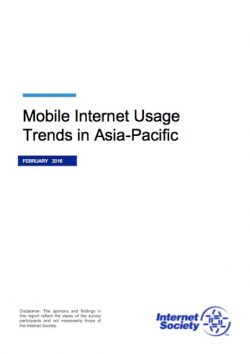Mobile broadband networks have in most countries in Asia-Pacific overtaken fixed broadband as the main mode of Internet access, with more than a third of the region’s population going online using mobile networks and devices.
Fuelled by a combination of low-cost smartphones, 3G and LTE rollouts, and an abundance of content—particularly applications–from over-the-top providers, mobile is driving Internet adoption in the region, and will continue to do so for at least the next five years.
This bodes well for the region’s 4.3 billion people, more than half of whom are offline. Mobile Internet, in particular, holds vast potential in bridging socio-economic gaps, bringing more inclusive development by expanding opportunities for education, business, financial inclusion, and public service delivery. But assessing the extent to which this has been realised requires a closer inspection of mobile Internet uptake in Asia-Pacific.
Beneath the region’s 42% mobile broadband penetration lies vast discrepancies: In advanced economies like South Korea, Australia, Taiwan and Hong Kong, this figure shoots up to more than 100%, but drops down to less than 10% in Papua New Guinea, Nepal and Timor Leste. Asia-Pacific ‘s average cellular speed, at 10.9Mbps, belies an uneven spread of 13Mbps or more for countries like Singapore and Japan, and 3Mbps for Bangladesh and Laos.
The average smartphone connection in Asia- Pacific now uses around 1Gb of data per month but huge differences prevail: While an average mobile user in Singapore or Japan would consume 1.5 to 2Gb of mobile data per month, their counterparts in China and the Philippines use more than a fifth less, at 200- 300Mb. One of the biggest barriers is affordability: Broadband access in developing economies, including landlocked countries in Asia and small island states in the Pacific can be up to 18% of monthly average gross national income, far higher than the ITU/UNESCO Broadband Commission target of 5%.
Amidst this landscape of great contrasts and potential, the Internet Society Mobile Internet Usage in Asia-Pacific study sought to capture mobile users’ online habits to provide insight on its current state and evolution. Conducted online in September 2015 using the Survey Monkey platform, the survey had 1,620 respondents across 37 economies. Analysis of the survey finds a segmented market whose behaviour largely corresponds with regional projections, but whose growth requires further cultivation, through forward-looking measures and policies, to ensure that the mobile Internet remains a truly transformative force for the region’s economies, and for its people.
